Characterization of Hair Follicle Development in Engineered Skin Substitutes
June 2013
in “PLOS ONE”
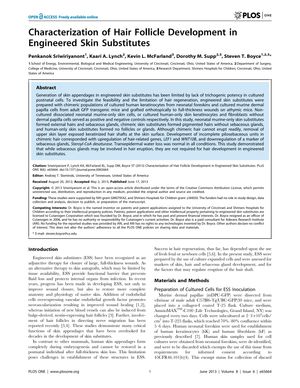
TLDR Engineered skin substitutes can grow hair but have limitations like missing sebaceous glands and hair not breaking through the skin naturally.
In the 2013 study, researchers explored hair follicle development in engineered skin substitutes (ESS) by grafting human keratinocytes and murine dermal papilla cells onto mice. They found that chimeric skin substitutes formed pigmented hairs without sebaceous glands, while murine-only substitutes formed external hairs with glands, and human-only substitutes did not form follicles or glands at all. The chimeric hair did not naturally erupt through the skin, but hair shafts were visible upon removal of the skin's upper layer. Gene expression analysis showed upregulation of hair-related genes and downregulation of a sebaceous gland marker, indicating that sebaceous glands are not essential for hair development in ESS. The study concluded that while ESS can support hair regeneration, there are limitations, such as the absence of sebaceous glands and the hair's inability to erupt naturally. This research contributes to the understanding of hair follicle development in tissue-engineered skin and the potential for hair restoration, particularly for burn patients.
View this study on journals.plos.org →
Cited in this study

research Development and homeostasis of the sebaceous gland
The document concludes that understanding the sebaceous gland's development and function is key to addressing related skin diseases and aging effects.

research Bald scalp in men with androgenetic alopecia retains hair follicle stem cells but lacks CD200-rich and CD34-positive hair follicle progenitor cells
Men with baldness due to androgenetic alopecia still have hair stem cells, but lack specific cells needed for hair growth.
research Matrix Metalloproteinase-9 Is Involved in the Regulation of Hair Canal Formation
MMP-9 is essential for proper hair canal formation.
research Characterization and isolation of stem cell-enriched human hair follicle bulge cells
Researchers successfully isolated and identified key markers of stem cell-enriched human hair follicle bulge cells.
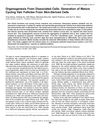
research Organogenesis From Dissociated Cells: Generation of Mature Cycling Hair Follicles From Skin-Derived Cells
Scientists have found a way to create hair follicles from skin cells of newborn mice, which can grow and cycle naturally when injected into adult mouse skin.
research Asebia-2J (Scd1ab2J): A New Allele and a Model for Scarring Alopecia
The absence of functional sebaceous glands causes hair follicle destruction and scarring alopecia.
Related
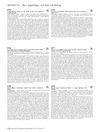
research 575 An extract of Leontopodium alpinum prolongs anagen phase in human hair follicles ex vivo
Leontopodium alpinum extract may help reduce hair shedding by keeping hair in the growth phase longer.
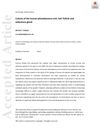
research Culture of the human pilosebaceous unit, hair follicle and sebaceous gland
The article concludes that developing in vitro models for human hair structures is important for research and reducing animal testing, but there are challenges like obtaining suitable samples and the models' limitations.
research 918 Tissue engineered human hair follicles from genetically, environmentally and extrinsically reprogrammed dermal papilla cells
Researchers developed a method to grow human hair follicles using 3D-printed skin models and modified cells.

research A model system to analyse the ability of human keratinocytes to form hair follicles
Scientists developed a system to study human hair growth using skin cells, which could help understand hair development and improve skin substitutes for medical use.

research Characterization of Hair Follicle Development in Engineered Skin Substitutes
Engineered skin substitutes can grow hair but have limitations like missing sebaceous glands and hair not breaking through the skin naturally.
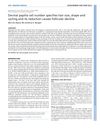
research Dermal papilla cell number specifies hair size, shape and cycling and its reduction causes follicular decline
More dermal papilla cells in hair follicles lead to larger, healthier hair, while fewer cells cause hair thinning and loss.

research Roxithromycin antagonizes catagen induction in murine and human hair follicles: implication of topical roxithromycin as hair restoration reagent
Roxithromycin, an antibiotic, can increase hair growth and might be used as a treatment for hair loss.